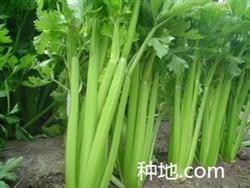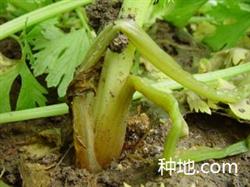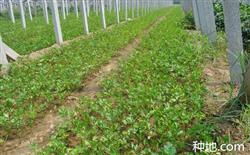How can celery grow in greenhouse produce high yield?

How can celery be grown in greenhouse with high yield? Due to the strong resistance and high yield of celery, it is suitable for the production of plastic solar greenhouse. China Agricultural Technology Network reminds you that when producing celery in plastic solar greenhouse, take the following measures to promote the increase of yield. Varieties with high yield and high quality. The production capacity varies greatly with different varieties, with some varieties yielding only 3000-4000 kg per mu, while the varieties with good yield can reach 8500 kg per mu. In greenhouse production, Italian winter celery or American parsley with good yield can be selected, as well as green celery with solid stalk and glass crisp. Prepare the soil and fertilize. After the greenhouse was built, 5000-6000 kg of high-quality farm manure, 50 kg of superphosphate and 25 kg of ammonium bicarbonate were applied to the surface evenly, and then ploughed again to a depth of about 30 cm. Suitable for live broadcast. The method of raising seedlings and transplanting celery is generally used in cultivation, but according to the production experience, direct seeding has more advantages when producing celery in plastic solar greenhouse, mainly because it does not hurt the root system and there is no slow seedling stage. The root system is strong, the absorptive capacity is strong, and the fertilizer and water are fully utilized, which is beneficial to the vigorous growth of the aboveground parts and increase the yield. Generally, the seeds should be sowed 10-15 days after the buckle shed, soaking seeds before sowing, shallow sowing when the soil moisture is good, and appropriate deep sowing when the soil moisture is poor, so as to benefit the whole seedling. Management: it mainly includes two aspects: celery growing period management and environmental management. 1. Growth period management: when celery seedlings grow to 3 true leaves, the seedlings are evenly spaced according to 13 cm. Timely ploughing and weeding, when growing to 5 true leaves, start watering, often keep the ground moist, start to fertilize when the petiole is 10 cm long, about 10 kg of ammonium carbonate per mu, and 15 kg of ammonium carbonate per mu when 25 cm long, watering in time after each topdressing to facilitate the absorption and utilization of fertilizer by the plant, promote growth, and harvest in time when the petiole is about 40 cm long. 2. Environmental management: in the initial stage of sowing, as the external temperature is still high, it is necessary to strengthen ventilation and control the temperature between 18 ℃ and 20 ℃. After entering December, the outside temperature becomes cold, so we can cover it early in order to increase the temperature in the greenhouse and keep it to about 20 ℃. Celery is a wet crop. In the process of cultivation, the ground should always be kept moist. Celery light requirements are not strict, appropriate weak light is conducive to celery growth, daily light time of 6-9 hours can be. Harvest: the petiole of celery has a strong ability of regeneration. The method of harvest or harvest is adopted to improve the yield. 3-4 leaves of each plant are harvested, fertilized and watered in time after harvest, and stubble should be left 3-5 cm when harvesting. After cutting, high-quality farm manure should be applied per mu, 2000-3000 kg, and watering should be timely after application. More celery planting techniques
- Prev

How to do the celery stalk slender?
How should celery suffer rot disease to do? Celery soft rot, also known as rot, rot. In general, the optimum temperature of the disease is 25-30 degrees Celsius, and the disease site is mainly at the base of the petiole or on the stem. The disease spot showed a water-immersed light brown sunken spot at the beginning, then wet rot, blackened and smelly, and only remained in the epidermis. Prevention and treatment prescription.
- Next

How to grow celery
How should celery be grown? What are the steps? 1, land preparation for border, should choose high-lying, convenient drainage and irrigation, loose, fertile sandy loam soil as seedling beds, ploughing and exposure, and apply enough rotten base fertilizer (to make the soil loose to apply more circle fertilizer), because the bud top soil strength is weak, seedling emergence is slow, must be sufficient.
Related
- Where is it suitable to grow horseradish in China? it is expected to see the middle altitude horseradish in Alishan.
- How to prevent tomato virus disease reasonably? (Control methods included)
- Many people like to plant towel gourd on the balcony. What are the main points of this method and management?
- What crops can chili peppers be mixed with?
- Fertilization techniques and matters needing attention in Tomato
- What are the grafting techniques for peach seedlings in spring?
- Harm and control methods of root swelling disease of Chinese cabbage
- What are the pests of sweet potatoes? How to prevent and cure it?
- Symptoms, causes and Control methods of navel Rot in Tomato
- The cause of "Cucumber rotten bibcock" in Farmers' planting Cucumber and its Control Plan

